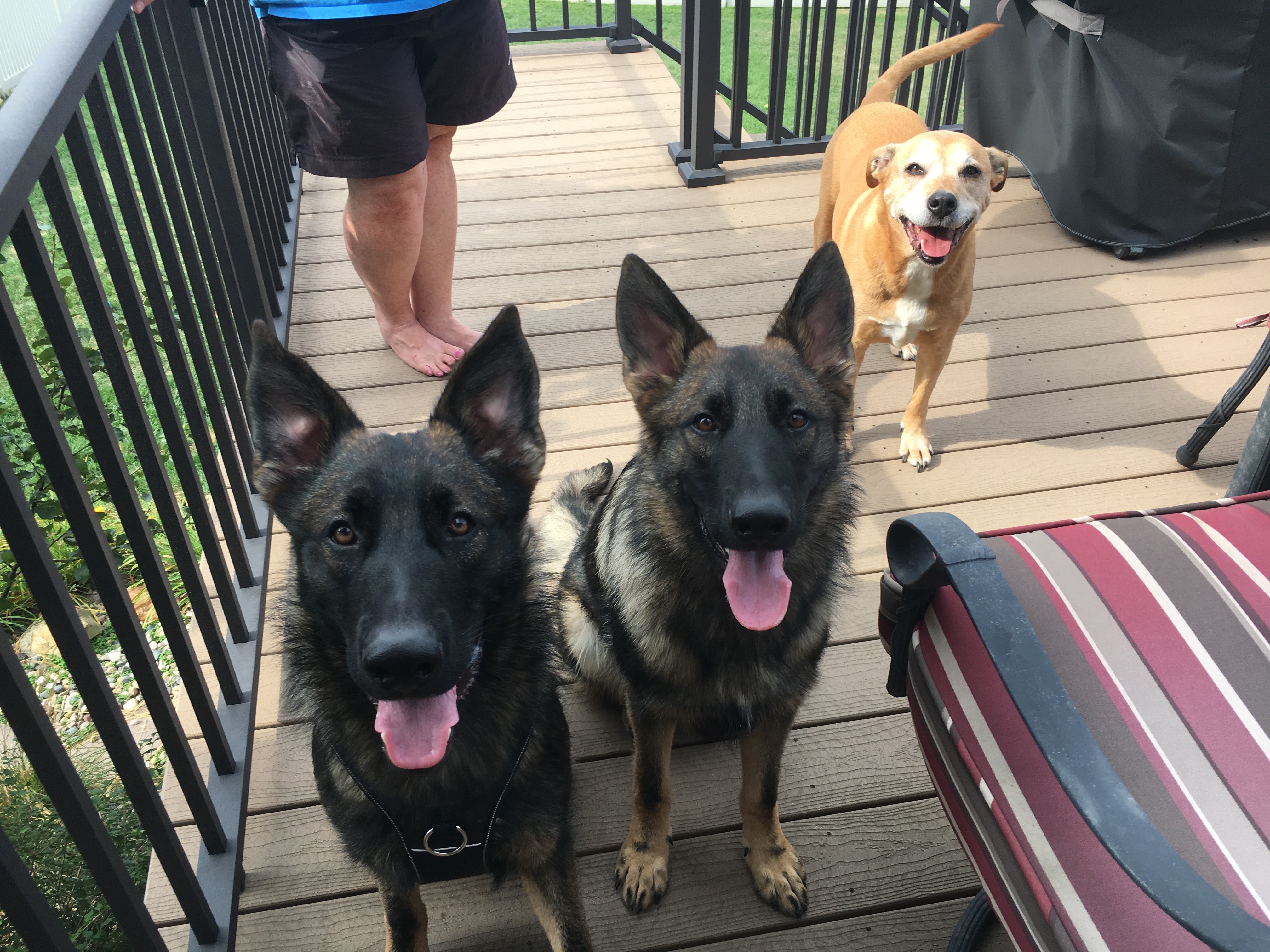How to Use Counterconditioning to Help a Reactive German Shepherd Pup Enjoy Meeting Strangers
By: David Codr
Published Date: August 22, 2017
Cion (left) and Clover (middle) are ten-month-old German Shepherd brothers who were recently rescued and brought into twelve-year-old Shepherd Mix Ellie’s home in West Omaha. Their guardian set up this dog behavior training session to teach Cion to stop acting aggressive to humans or guarding his new human.
While Cion did not bite me badly, he was riding the edge between alerting and aggression. I suggested his new guardian practice a similar entry / arrival ritual with new people, but without letting the dog pull towards the newly arriving person.
Stopping, waiting for the dog to settle down then commanding it to sit before taking one or two steps towards the person before pausing again in the same fashion will need to be repeated and practiced with multiple people of all different types (ages, heights, widths, with beard, wearing a hat, different sexes, etc).
This will help the dog practice a new way of greeting people; calmer and without lunging or being excited. While the dog is excited, the human must make it clear that it must stay in place. With enough repetitions, the dog will learn the only way to move forward is to stop barking and lunging. The handler communicates this to the dog by immediately moving forward once it settled down.
Cion’s guardian can accelerate his behavior modification by practicing the door answering ritual I outlined above as well as using this simple positive dog training exercise that features counterconditioning.
Because he is still a pup, his potential to adopt more polite and desired dog behaviors are higher than they will be in a few months. It will be very important for the guardian to find opportunities to invite people over to practice this new greeting as much as possible in the next 2-3 months.
I am concerned that if the guardian fails to arrange regular visitor to the house to practice a new way of greeting strangers (at least 4 new people a week, goal should be 8 or more), Cion’s behavior may get worse. Even if it stays the same, there is a high probability that he will encounter a human who panics and runs which would almost certainly result in a bite.
To help Cion start to identify as more of a follower, I suggested a number of rules and ways to add structure to his day to day life. Incorporating mini dog training exercises through repeated interactions (like petting with a purpose and passive training) will go a long ways towards eliminating dog aggression in Cion.
One of the rules I suggested was to require the dogs to sit at the door before letting them out. Once they can do that, the guardian can move on to a more advanced dog training exercise; teaching the dog to sit and wait for permission to go through an open door.
The more the guardian practices entertaining guests, enforces the new rules and adds structure, the faster and better the dog’s behavior will become. The shepherds aren’t aggressive dogs, but Cion is at a critical juncture.
If he starts to see his human assuming the leadership role through her interactions with him, he will start to fall into a follower position. If she does not help him develop a new more positive way of meeting new people in the next two months, stopping his human aggression behavior will be much more difficult.
I spent more time than usual when we filmed the roadmap to success video at the end of the session. I wanted to give the guardian as many dog behavior expert tips as I could to help ensure these dogs learn to be calm, gentle and loving around new people for the rest of their lives.
Categorized in: Dog Behavior


